An olive harvest: Mediterranean diet
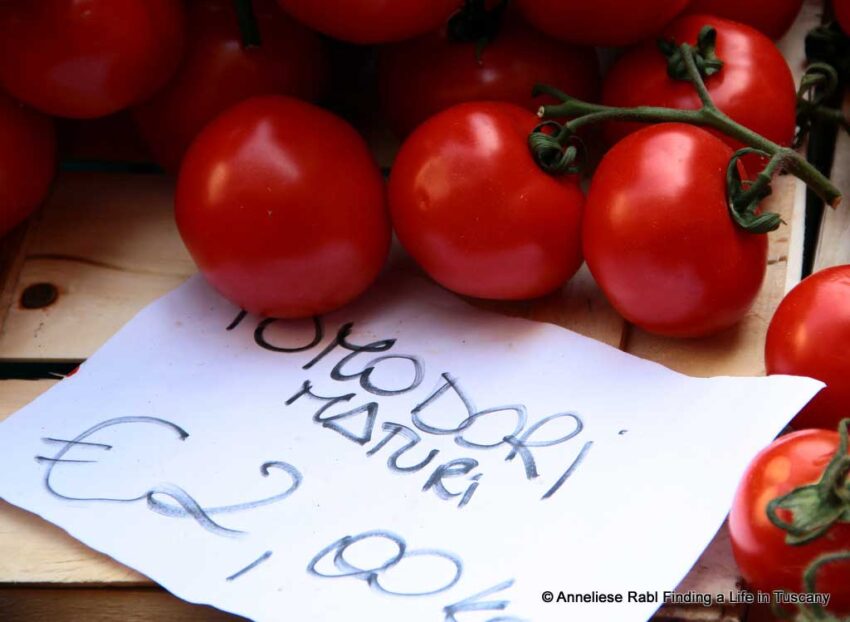
6. Sunday
Supporters are coming to give us a hand. That’s good, because at a certain point I started to doubt that this crop would ever come to an end. Volunteers with young, strong and impatient arms, who do not yet have what one could call a harvesting technique – I do not belong to this category any more – and older ones, with lifelong experience, who know all the ways of making the harvest easier, comfort and encourage us with their presence.
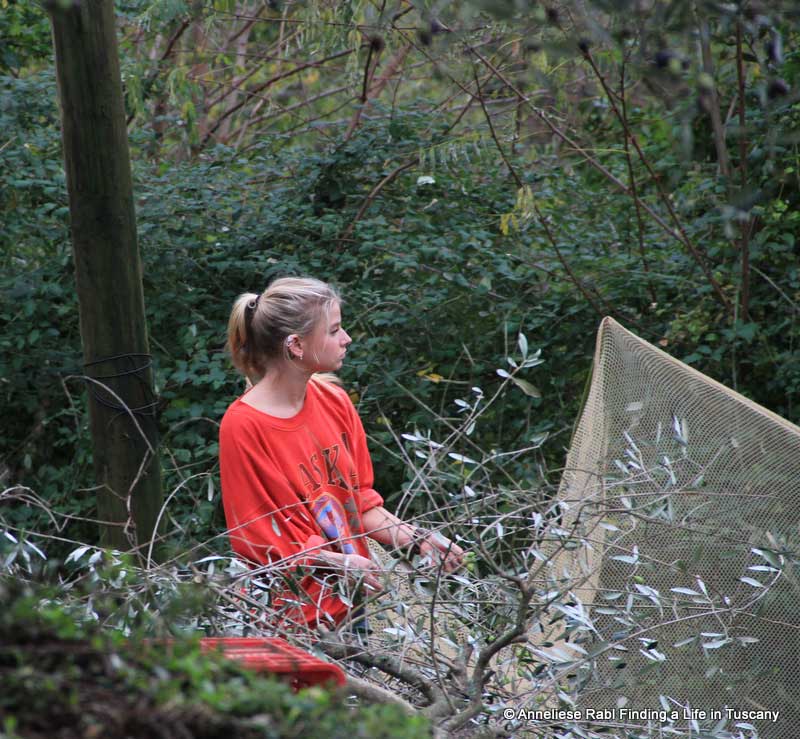
No complaints on the subject of back pain, no one is cold or hot, hungry or thirsty. We are picking as if nothing else in the whole world matters and, at least for eight Sundays, it is actually like this. I am in a brand-new world and just let myself flow. Every now and then words and whole sentences blow by … this year the olives are surprisingly abundant… the earliest possible appointment with the oil mill is at eleven o clock in the evening… the neighbour’s daughter has got married… the son of an acquaintance has separated from his wife. “It’s a pity”, I hear somebody chatting, “they have known each other from an early age”. Another voice adds “maybe that’s the reason why they separated”. From somewhere else come the words “who would have imagined?”
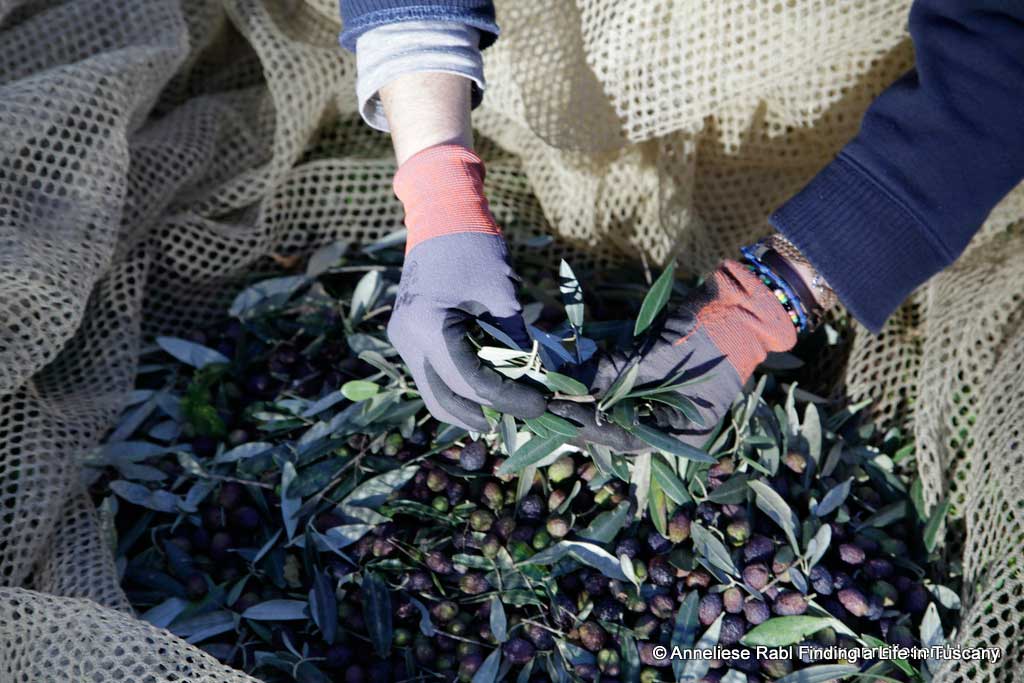
By using both hands at the same time I have become very fast indeed. This technique allows me to get my work done quickly. It allows me to pick the drupes with the others directly from the cut branches and twigs. This is definitely much better and easier than picking them from the ground. Suddenly I realise that this work is being done not only by the women but also by the men. Could it be that the task finds itself on the very fine line of activities, which can also be carried out by men without compromising their reputation?
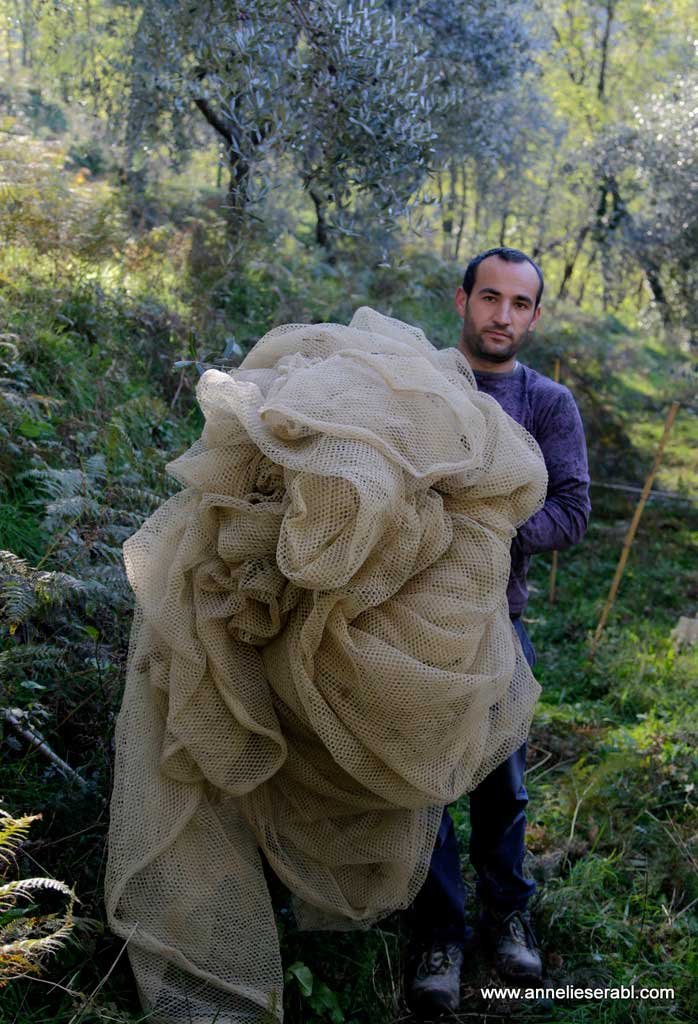
After having harvested the very last olive, we pull the nets together in order to heap the drupes in the centre. There are, unfortunately, small twigs and a great amount of leaves, too. Actually, the heap seems to be made of leaves and not olives, and the sorting out requires endless patience. The main difficulty consists in finding the best possible position. When I squat down, I relieve my back but my knees hurt, when I kneel down, my back becomes stiff. What remains is a technique which, used in a wise and alternating way, is acceptable. For a while I pick the leaves squatting down, while doing this, however, I stretch one leg to the side. Then I kneel down on both knees, then first on one, then on the other and finally on both knees again. My detailed description may sound exaggerated but one never knows what life may reserve. Never would I have imagined ending up in an olive grove in Tuscany sorting out olive leaves from olives.
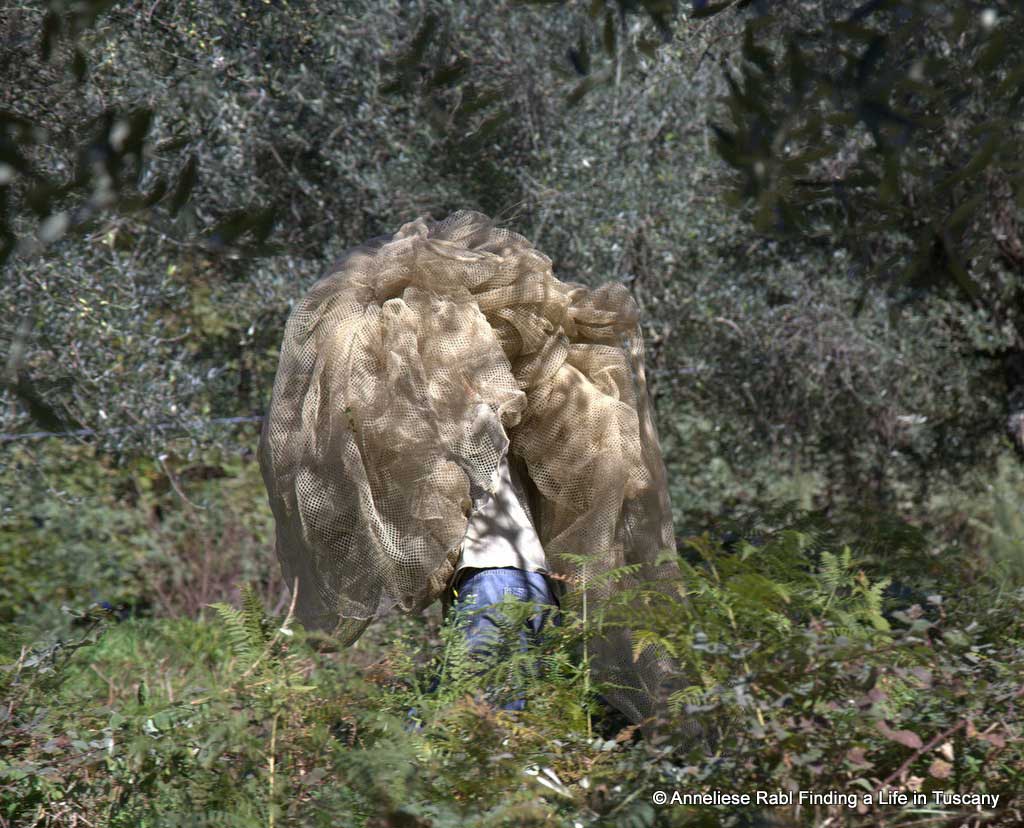
I don’t know why, but my male companions still do not want me to climb an olive tree. Even the spreading of the nets, by the way, seems to hide secrets I must not know. So I confine myself to bringing them harvest poles or tools like saws, ropes, sometimes a knife, which they ask me to fetch.
Who participates in an olive harvest has a free lunch and this is an extremely pleasant moment of the day. I am not used to having someone cooking for me, therefore I particularly appreciate sitting down at a set table. It is situated in a small hut right in the middle of the campo, on which an inviting variety of food faces us. Laying the table, washing the dishes and cleaning the kitchen range are not part of my tasks, either. I have been, in fact, assigned to pick olives. While talking about this and that, we enjoy the genuine food. Obviously the topic “cooking with olive oil” comes up. I was astonished to see how generous the lady of the house used it on salads, cooked vegetables, meat, fish, sauces, stews and all the other delicious dishes she had prepared. Not to talk about the pieces of bread roasted on the open fire and served with a fair helping of olive oil. An authentic, excellent waistline killer.
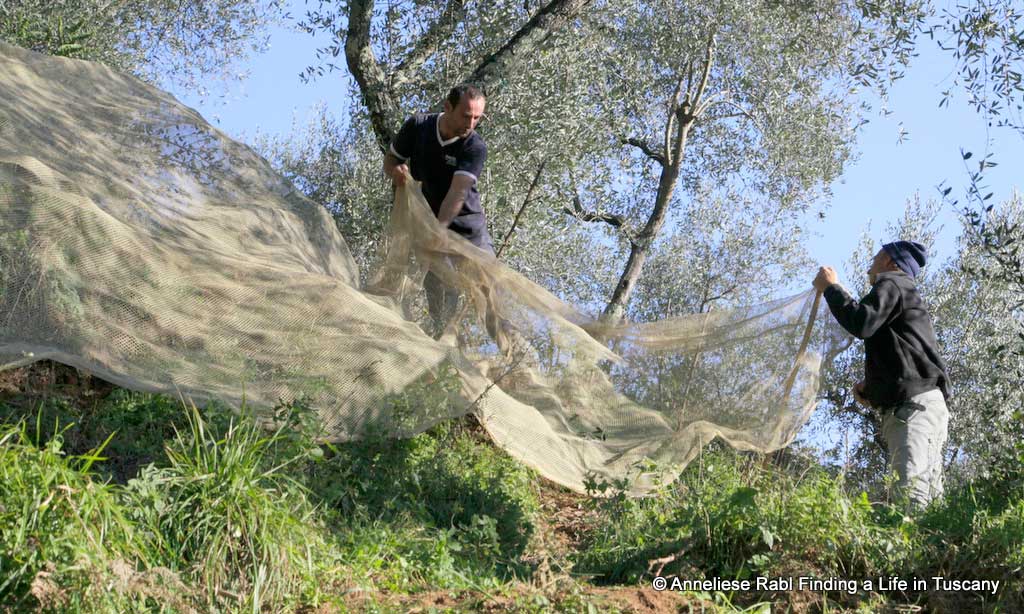
Our hostess tells me that she uses the remainder of last year’s oil for cooking and this year’s for dressing. She disposes of plenty of first class, cold pressed olive oil, enough even for frying. We all agree that fried food is not healthy but that it tastes fantastic. Tuscans uphold the theory that even a sole of an old shoe, when fried, is delicious. If we truly had to sacrifice ourselves we would prefer to do it by eating food fried in olive oil giving it an outstanding taste rather than in other, less expensive oils.
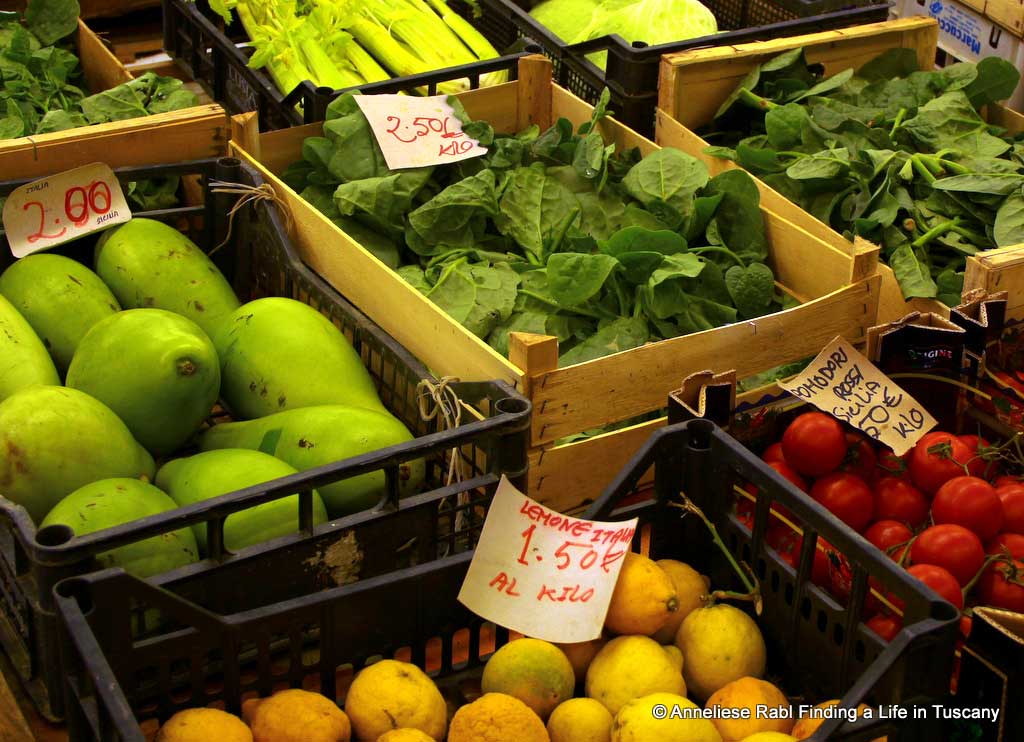
“In the Mediterranean diet olive oil has always played a very important role“.
The daughter of the hostess, a pharmacy student, reminds us of this detail. When she asks for our opinions we are evasive. Of course we all know the expression dieta mediterranea. Unfortunately most of us have only a vague idea of what exactly it’s all about. For this reason, we ask her to share her knowledge with us.
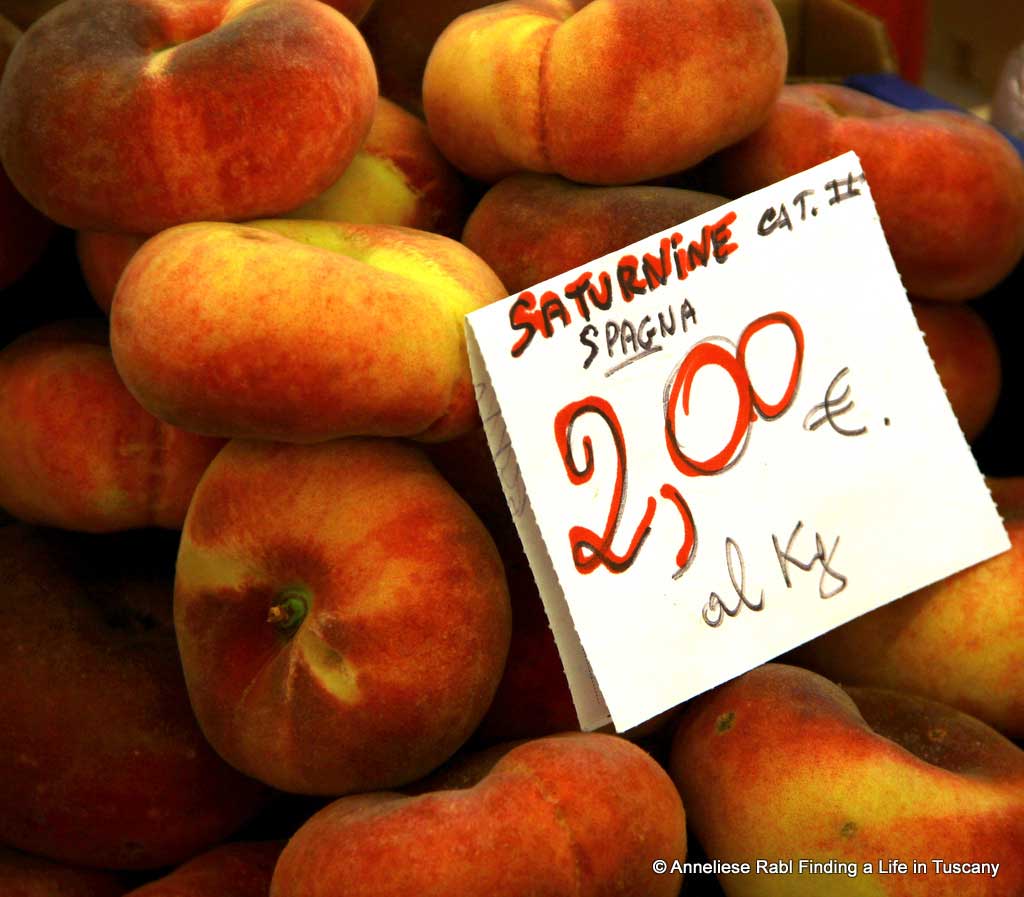
“In February 1952, the American professor Ancel Keys came to Naples with his wife and his car packed with laboratory utensils. The reason for his journey was to collect material for a study on food alimentation. He wanted to compare with the results of the same study made in America in relationship to coronary cardiac disorders. A few months were sufficient to ascertain that the diet of an average Neapolitan was poor in animal fat and that he made generous use of olive oil rich in unsaturated fatty acids. If somebody suffered a heart attack in the majority it was a prosperous fellow-citizen, wealthy enough to nourish himself with food rich in animal fat and saturated fatty acids.
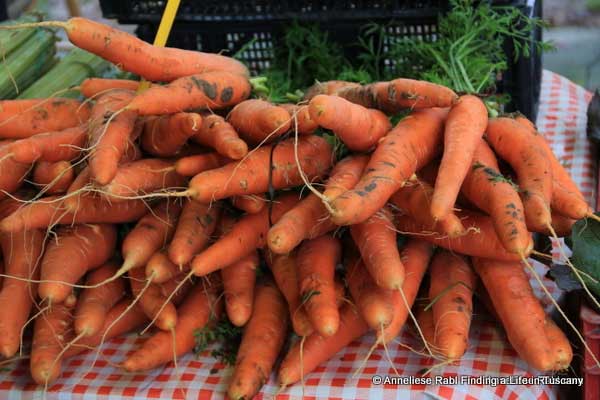
In this case a relatively high rate of the disease was noticeable. Furthermore, from Ancel Keys’ work followed that on one hand this incidence was connected with the cholesterol level. On the other hand that the rate of heart attacks in south European countries like Italy, Spain and Greece was lower than in the middle and north European countries and in the USA. These results formed the basis for the so called “seven country study”. Thousands of men between forty and fifty-nine, from seven countries and three continents, viz. Finland, Japan, Greece, Italy, Holland, USA and ex Yugoslavia, declared healthy and fit, have been observed for years to examine the incidence of coronary heart diseases. An eye was kept on the main risk factors such as cholesterol level, high blood pressure, smoking- and eating habits.
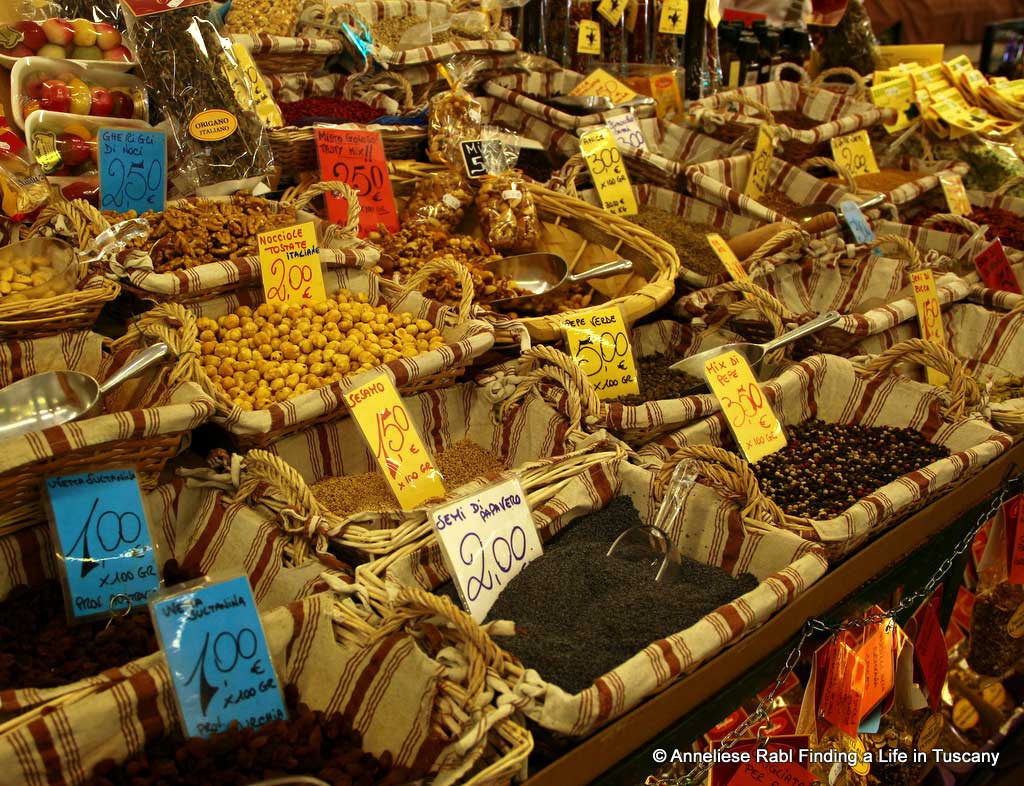
This important study revealed that the dieta mediterranea was ideal for preventing coronary heart diseases. Surprisingly astonishing results had been achieved by examining the traditional nourishment on Crete. It showed, in fact, that the large portion of olive oil in the daily diet, covering nearly forty percent of the total calories, not only reduced mortality but also diseases from coronary cardiac disorders. They were even lower than in the other Mediterranean countries, where olive oil was regularly used but in smaller quantities. On the other hand, the death rate in Finland, America and Holland, where the population used aliments with plenty of saturate fatty acids, was remarkably high.
It was also interesting to note that the cholesterol level of the Crete participants hardly differed from that of the other Mediterranean countries. What did the Cretans eat? Typical Mediterranean food. Little meat and dairy products, instead fish, vegetables, cereals, fruit, moderate red wine and plenty of olive oil. Today, modern science knows that olive oil does decisively reduce risks of heart attacks. Besides, it prevents diseases of the digestive system, arteriosclerosis and several forms of cancer. It has been discovered that the Italians and Greeks, on average, live longer than the Dutch or Finns”.
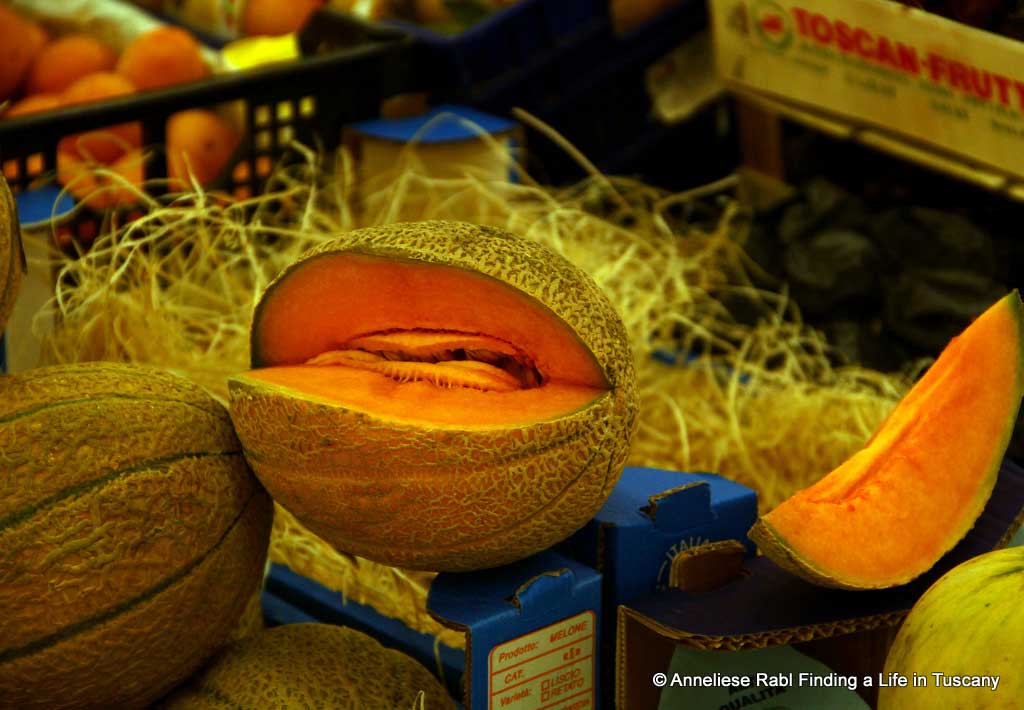
This information brings out mixed feelings in me. I, too, come from a land which loves plenty of saturated fatty acids. The thought of a slice of bread, freshly baked, still warm, spread with lard and sprinkled with a little salt still makes me grow weak. But today I am more reasonable and I have learnt to resist a certain tickling of the palate. In the meantime I have discovered olive oil I am jolly glad that I changed my feeding habits many years ago.
The argument olive oil and olives, of course, is not exhausted and the topic “olives in the kitchen” is raised. We talk about antipasti, noodles, rice dishes and main courses. Everything gains in delight and flavour when adding a handful of the small, savoury drupes. Some regional dishes would not be a “speciality“ without them. We all have our own, favourite olives but we agree that the traditional oven dried black, mature olives, which in Tuscany are used for coniglio alla cacciatora (rabbit in the huntsman’s way) are not very tasty. This because they are too bitter and insipid. In their place, we love the local ones, called nostraline. They are small, full, very aromatic and Tuscans not only use them for cooking but also for starters.
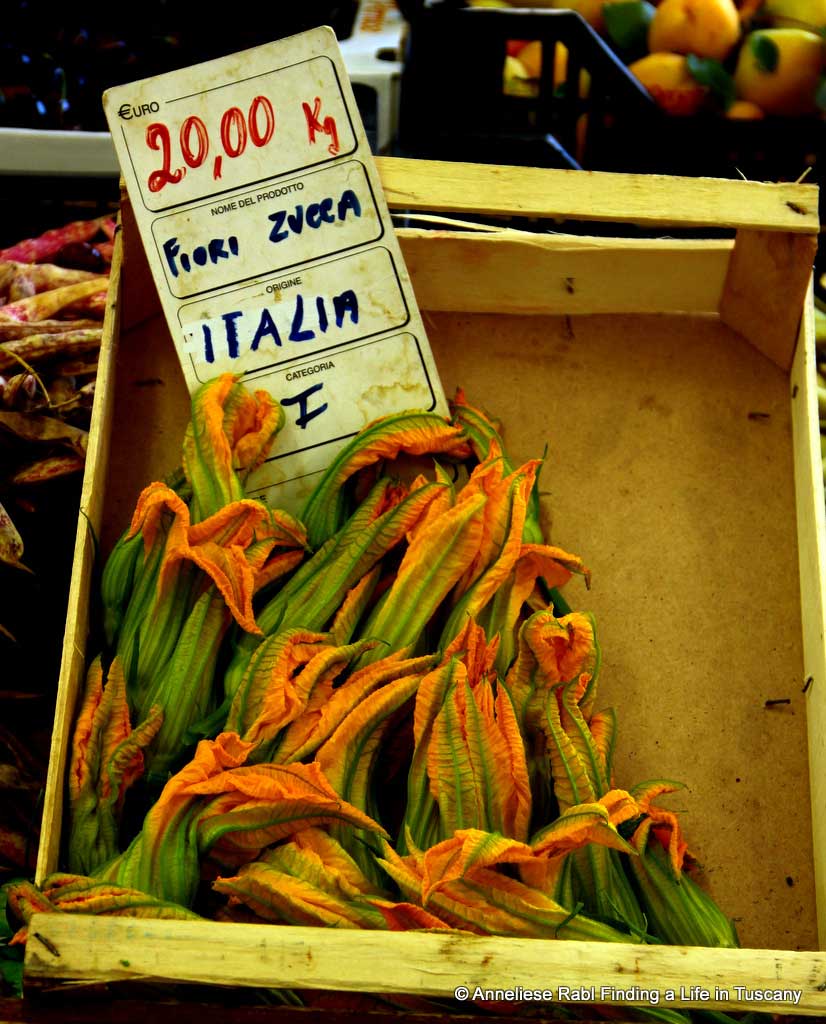
A lucky owner of an olive grove, like ours, does not usually produce only his own oil, but the olives for personal use as well. Therefore I am surprised when I learn that our hostess, who cooks, braises, roasts and fries with olive oil, has never succeeded in brining olives. The result of her attempts, she tells us, have always been musty, uneatable olives. Faithful to my origins I would at any moment be ready to tell all there is to know about butter or lard, but nothing about olives. However, eager for anything new and willing to learn, some time ago, I had asked those I considered the right people, i.e. cooks, gourmets, grandmothers and farmers’ wives for tips and secrets regarding their preservation. They revealed some fantastic recipes and I am glad to pass them on to the landowner’s wife.
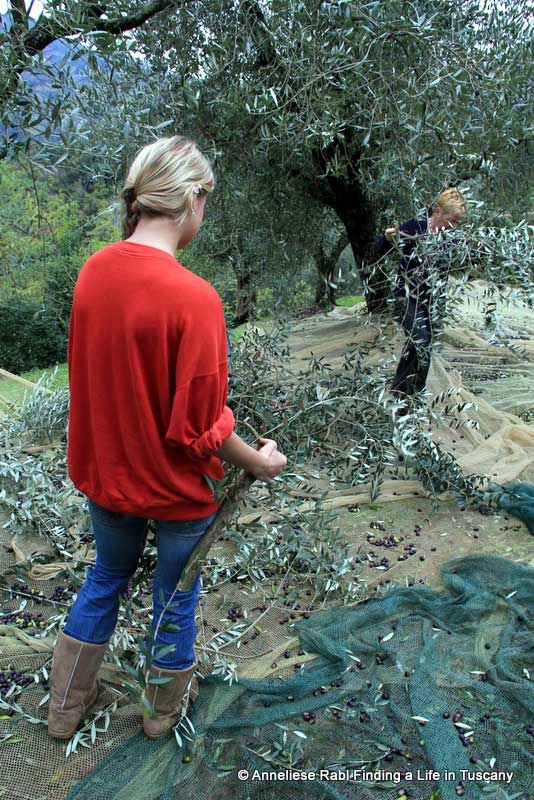
„You need perfect, firm, possibly fleshy olives which are still green. Any eventual leaves must be carefully removed, otherwise the olives will be too bitter. Put them in a container and cover with water, which must be changed daily to eliminate the bitter taste of the olives. Normally this operation takes forty days. It is however advisable to try an olive after about thirty days, because some people like them bitter, others mild. If it tastes too bitter, soak the olives for another week still changing the water daily, then try another olive. Continue in this way until they are mild enough for you.
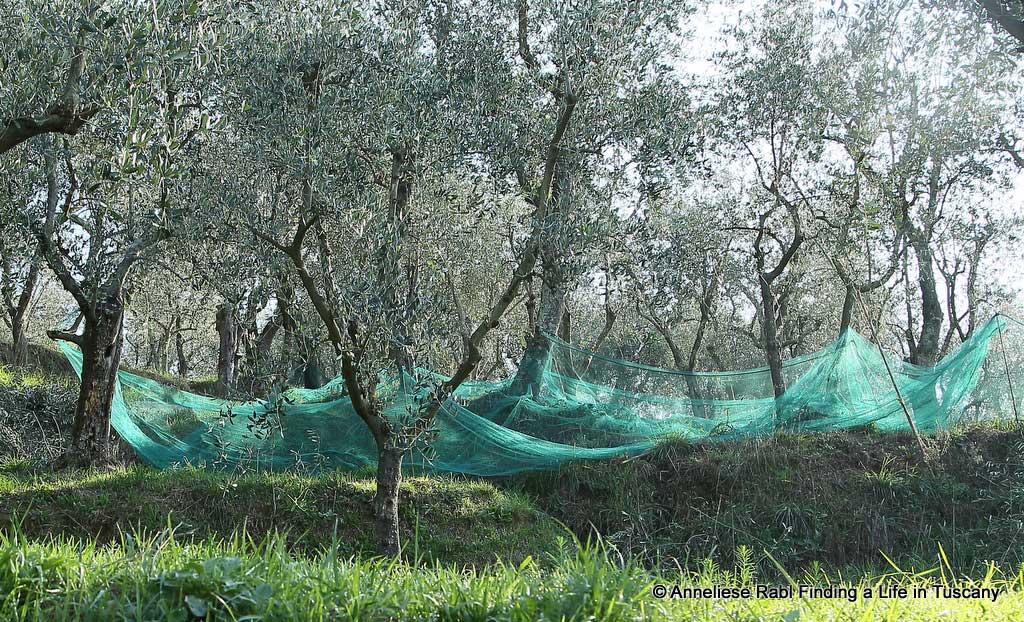
Now put a pot on the fire and add salt, start with sixty grams for each litre of water and bring to boil. Some like it saltier and add eighty or ninety grams per litre, but this depends on personal taste. In no case should you use less than sixty grams, because the salt serves as a preservative. The quantity of water depends on how many olives have to be pickled and must cover them completely. When the water boils, reduce the heat and stir constantly until the salt has completely dissolved. Now taste the salt solution. If it is not strong enough start adding five grams of salt at a time, stir thoroughly, try the liquid again and, if necessary, add another five grams. Be careful and remember that you can add salt but once dissolved in the water it cannot be removed. When the brine tastes exactly as you want it, add spices and herbs.
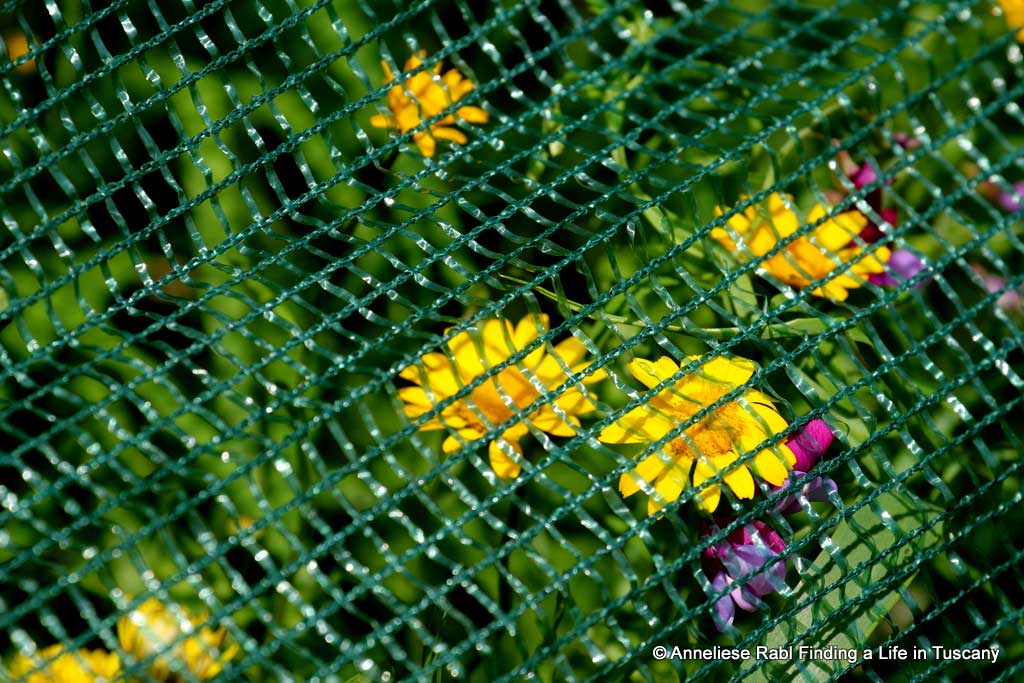
Many prefer the classical mixture made of cloves, cinnamon and laurel, but you can, of course, experiment with rosemary, thyme, orange or lemon peel, fennel seeds, pepper corns, red hot chillies and garlic. No limits are set to your fantasy. While the ingredients boil for a couple of minutes, put the olives in airtight containers such as storage jars. Remove the brine from the heat, allow to cool and pour over the olives, which have to be completely covered. Fasten the jars tightly and store in a cool dark place for about one month. After a week make sure that the olives are still covered with brine, otherwise, add the necessary quantity. Not later than two or three weeks you will probably start to consume them – only few people resist for an entire month. It is useful to write the salt/water proportion and the exact quantity of the herbs and spices used in a little recipe book. Don’t rely on your good memory otherwise the following year you’ll probably have to start all over again”.
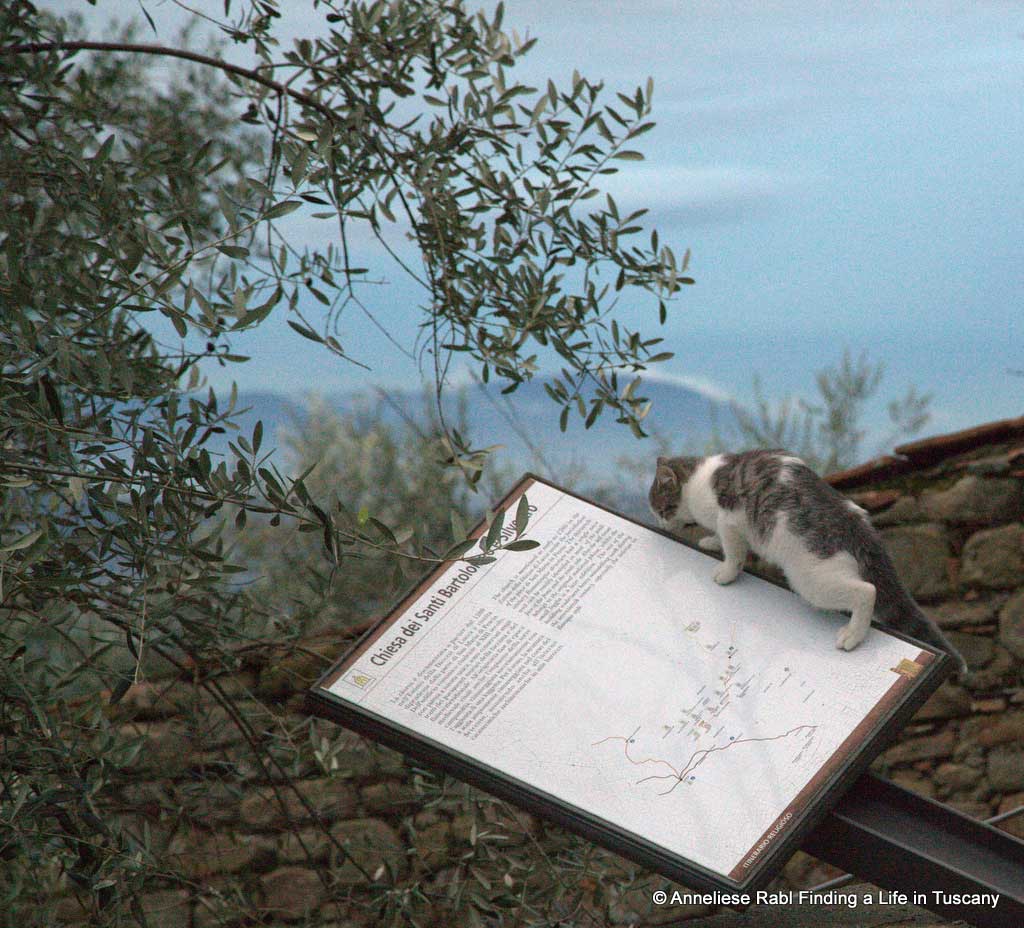
Besides this classical recipe in brine the drupes can be preserved in oil, vinegar, salt, baked in the oven, stuffed, coated in bread crumbs and marinated and we exchange some recipes. Meanwhile I understand why we all find that the black flat olives are not very nice. They are harvested at the end of the crop, when they are fully ripe and wrinkling on the tree. Only now are they picked and first left in the open air and then dried in the oven at moderate temperature. Another preservation method consists in filling jars with olives alternating one layer of olives with one of salt.
Today we have been very productive: the day ends with a harvesting result of two and a half hundredweights!

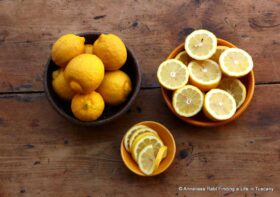
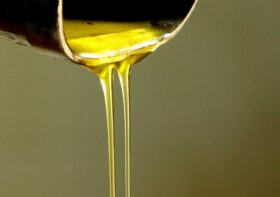
Leave a Reply